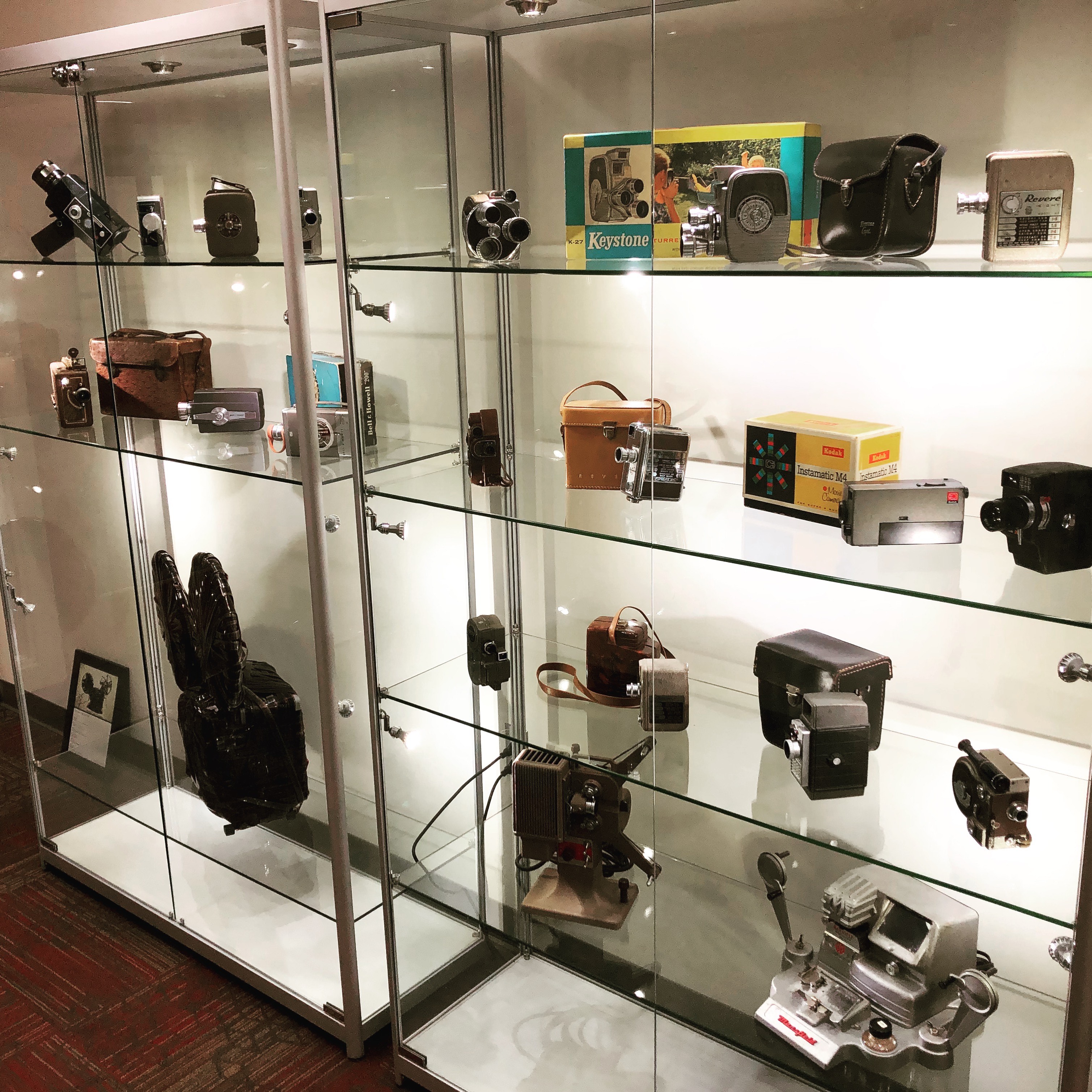By Caleb Allison, Associate Instructor, PhD Student, The Media School
As the Alan Lewis Collection continues to be processed new and exciting discoveries continue to be made about the diverse collection of motion picture technologies ranging from the 1920s up to the 1980s. For one, we’ve learned that early in his career Alan Lewis worked right here in Bloomington, IN! Lewis worked for the Public Television Library (PTL) of PBS between 1973-74. PTL worked closely with the Indiana University Audio-Visual Center (IUAVC), a precursor to the IU Libraries Moving Image Archive, and WTIU Public Television to acquire nonlocal TV programs for national distribution. Throughout his long career with motion pictures Lewis also worked as a TV producer and director, and eventually Director of Programming, for WEDU-TV out of Tampa, Florida, and as the Director of the CBS News Film and Videotape Archives.
Most recently Lewis worked for the Motion Picture, Sound and Video Branch of the U.S. National Archives and Records Administration (NARA) in Washington, D.C. Eventually, Lewis started collecting the very technologies making the images he oversaw during his career. Amassing a collection of over 200 cameras, projectors, viewers, and editors, along with many of their original cases, sales boxes, instruction manuals, and accessories, the diversity and breadth of his collection offers an important and unique snapshot of motion picture history.
One of the true gems of the collection is a 16mm Ciné-Kodak Model B in ostrich leather with matching case. In production from 1927-1931 the Model B was the Cadillac of amateur cameras. The 1928 edition of Amateur Movie Making lists the price of the ostrich leather option at an additional $75. The standard Model B retailed for about $225, bringing the total price of the ostrich edition to a cool $300. Inflated for today $300 becomes $4,300!
The cleaning and testing of these cameras has been supplemented with motor recordings when possible. Amazingly, this Ciné-Kodak still runs after 90 years and has a beautiful purr you can listen to here:
Here’s a small sample of some other sweet motor sounds from the collection:
A selection of moving image technologies from the collection are part of two new exhibits located in the lobby of the IU Libraries Moving Image Archive (IULMIA) and the ground floor lobby of the IU Cinema. The Ciné-Kodak in ostrich leather can be viewed at the Archive. These exhibits seek to reveal the incremental evolution and vast diversity of amateur and home moviemaking equipment, as well as its beauty. From the extravagant ostrich leather casings of the 16mm Ciné-Kodak to the industrial portability of the 8mm Revere series exists the aesthetic blending of art and utility. The collection not only hosts a diversity of motion picture cameras, but a selection of their original cases and even sales boxes, as well as projectors and viewer/editors. The collection represents an important form of moving image history and technology outside of commercial Hollywood production. These are the objects that captured and shared the everyday, the familial, the nontheatrical, and so much more.

One of my personal favorites is the Super 8mm Yashica Super-800 Electro camera. Produced between 1970 and 1974, it has an atomic-age look reminiscent more of the 1950s than the 1970s. Sporting a sleek, all-black camera body, retro graphics, and colorful dials, including a seemingly arbitrary but super-cool 1950s atom graphic on its speed dial, bright green battery check light, and baby blue footage counter, it stands uniquely apart from its collection counterparts. The Yashica Super-800 is also part of the IULMIA exhibit, and its progenitor, the Yashica Super-60 Electronic, can be found in the IU Cinema’s exhibit.
Moving forward with the collection the Moving Image Archive plans to preserve and maintain the working order of the projectors and cameras while restoring those that can be fixed. They are undoubtedly beautiful machines but many of them are also functional, and their exhibition as well as their utility will be used to offer experience and education to students and film lovers alike.
Leave a Reply